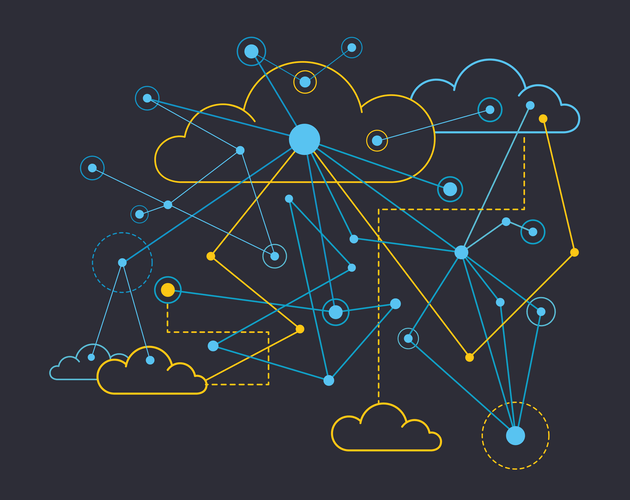Rather than having multiple Runners idling for many projects, you can have a single or a small number of Runners that handle multiple projects. A repository is a part of a project, which has a lot of other features. GitLab goes beyond being just a repository manager; it has a built-in CI/CD, which saves enormous amounts of time and keeps the workflow smooth. Along with its own CI/CD, GitLab also allows for a range of 3rd party integrations with external CI, so you always have the option of working with the tools based on your workflow. There are many DevOps lifecycle tools out there, however GitLab is a complete package designed for coordinating CI/CD pipelines. After starting the ec2 instance we need to prepare the ec2 instance in order to run the docker container.
- To arrange jobs in the pipeline graph based on their needsdependencies, select Job dependencies in the Group jobs by section.
- This is a common technique when doing continuous deployments, because it allows you to quickly deploy an older version of the code in case of a defective deployment.
- Whether they meet some acceptance criteria is kinda another thing.
- It can be the difference between a CI which gets in the way and is “red” for most of the time — and a CI which helps in everyday work.
- Let’s create a Dockerfile to copy the HTML file into an Nginx image.
This runner should be provided with Administrative privileges. GitLab Runner is open source and can be installed https://globalcloudteam.com/ and configured easily on your own infrastructure. First, the .RProfile is removed to avoid conflicts with renv.
Introduction to GitLab’s CI/CD for Continuous Deployments
While Jenkins is a general-purpose automation server, GitLab Runner is specifically designed for use with GitLab’s continuous integration and delivery pipeline. Additionally, GitLab Runner can be used with shared and dedicated runners, giving you more flexibility in managing your CI/CD pipelines. Finally, it can be deployed as a single binary on your own infrastructure or as a Docker container or Kubernetes cluster for added scalability and customization. In comparison, Jenkins is less flexible in terms of deployment options. This page focuses on the third option, programmatic deployment using GitLab CI/CD as a continuous integration and deployment pipeline. Continuous integration is the practice of automating the integration of code changes.

Continuous deployment takes this another step further by automating the process of deploying an application to production after every change. The last stage in the gitlab-ci.yml file consists of the destroy or the clean up action. When manually approved, it executes the terraform destroy command. Learn how to optimize your Apple platforms app development by building on Apple Silicon M1 machines with Harness Cloud. Harness CI is an enterprise ready, cloud native CI product. Developers can build at speed with self-service, cloud native pipelines that scale elastically.
Three Solutions for Updating your GitLab Repository Fork
Once on dashboard, add a new collection using the plus sign button next to collections. Deselect every feature except for Windows SDK Signing Tools for Desktop Apps, then select install. A study on global usage trends on Public Key Infrastructure and Internet of Things along with their application possibilities. Compare your organization’s encryption strategy with the global firm’s trend and understand the data protection strategies across multi-dimensional platform analysis. Overall, GitLab Runner is an essential component of any successful DevOps environment, providing automation, scalability, and reliability in the CI/CD process. The rest of this article reviews the file’s contents so you understand in detail what is happening.

Deleting a pipeline expires all pipeline caches, and deletes all immediately related objects, such as builds, logs, artifacts, and triggers.This action cannot be undone. To push a commit without triggering a pipeline, add or , using any capitalization, to your commit message. Just select the play button to execute that particular job. Enter any CI/CD variables required for the pipeline to run. You can set specific variables to have their values prefilled in the form.
The Modern Software Delivery Platform®
It will provide their clients with faster release cycles through CI and CD, release management capabilities, and code review features to enhance quality. With this knowledge, you can successfully implement any CI-CD pipeline, it doesn’t matter if it is JAVA based application or a nodejs-based application. We will manually start an ec2 instance with 5000 ports allowed on the security group with a new ec2 key pair.
RSA boss warns of ‘scary truth’: AI ‘co-pilots’ swooping on dev and … – DevClass
RSA boss warns of ‘scary truth’: AI ‘co-pilots’ swooping on dev and ….
Posted: Wed, 26 Apr 2023 07:00:00 GMT [source]
The working directory will be set to the repository root when these commands will be executed. This is a common strategy to provide a tag that always represents the latest release. For each deployment, the latest image will be overridden in the container registry with the newly built Docker image.
New DevOps Tools to Watch in 2023
As a result, development cycles are likely to become shorter, as less time is required to gather feedback and publish the code changes. $SERVER_USER and $SERVER_IP are the GitLab variables you created in Step 5. They specify the remote host and login user for the SSH connection. As you’ll explore in the coming steps, the process of rolling back a deployment to an older Git revision can be done directly in GitLab. This permits deployer to execute the docker command, which is required to perform the deployment.
In particular, the values of file variables are stored in a file and the environment variable will contain the path to this file. In this workflow, there is only one branch, which can be probably the main branch where all the developers are working. Here the codes are merged in real-time and hence there is no waiting for other developers to merge it into the main branch. This saves time for the developers and the code will be in production within a short duration of time. There can be different projects running on the same Gitlab and it might confuse the users as to which pipeline to be triggered. The project pipeline helps to describe the dependencies of the project and code thus helping in understanding the project.
Setup Personal Access Token in GitLab
Merged results pipelinesare merge request pipelines that act as though the changes from the source branch have already been merged into the target branch. Multiple jobs in the same stage are executed in parallel, if there are enough concurrent What is GitLab Pipelines runners. Pipelines are the top-level component of continuous integration, delivery, and deployment. Kubernetes, popularly shortened to K8s, is a portable, extensible, open-source platform for managing containerization workloads and services.

If you use unknown GitLab Runners to execute the deployment job, then you’d be unaware of the systems getting in contact with the private key. Even though GitLab runners clean up all data after job execution, you can avoid sending the private key to unknown systems by registering your own server as a GitLab runner. The private key will then be copied to the server controlled by you. GitLab lets you use artifacts to shift intermediate build results between different stages. A job can generate artifacts, and the pipeline stores them in GitLab, where you can download them.
Add manual interaction to your pipeline
In this tutorial you’ll build a continuous deployment pipeline with GitLab. You will configure the pipeline to build a Docker image, push it to the GitLab container registry, and deploy it to your server using SSH. The pipeline will run for each commit pushed to the repository.

Comentarios recientes